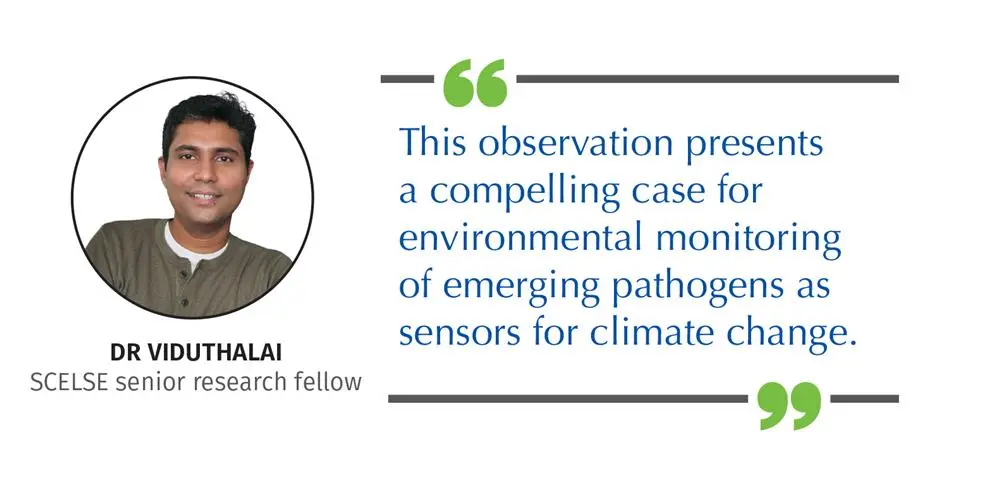SCELSE earns an “article of significant interest” in Applied & Environmental Microbiology
In their research “Loss of the acetate switch in Vibrio vulnificus enhances predation defense against Tetrahymena pyriformis”, SCELSE researchers made a significant discovery that underscores the need for continuous environmental monitoring of emerging pathogens.

Congrats SCELSE team (clockwise from left), Clarence Sim, Dr Viduthalai Rasheedkhan,
A/Prof Diane McDougald and A/Prof Scott Rice for this breakthrough discovery!
- Featured
- 22 Mar 2022
Bacteria in the environment, including Vibrio spp., interact with protozoan predators. To defend against predation, bacteria evolve antipredator mechanisms ranging from
changing morphology, biofilm formation, and secretion of toxins or virulence factors. Some of these adaptations can result in strains that are pathogenic to humans.Therefore, it is important to study predator defense strategies of environmental bacteria.
V. vulnificus thrives in coastal waters and infects humans. However, very little is known about the defense mechanisms V. vulnificus expresses against predation.
SCELSE scientists in collaboration with A/Prof Diane McDougald’s research group in University of Technology Sydney have shown that a V. vulnificus strain ENV1 has rewired the central carbon metabolism, enabling the production of excess organic acid that is toxic to the protozoan predator T. pyriformis. This is a previously unknown mechanism of predation defense that protects against protozoan predators.
The significance of this discovery is that the same metabolic pathway that we found in V. vulnificus strain ENV1 that helps defend predation is also responsible for toxin production in the human pathogen V. cholerae. This suggests that such variation in metabolic pathways may improve environmental fitness, e.g, predation defence, as well as increasing virulence in mammalian hosts.





